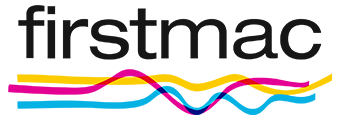Self-managed superannuation funds (SMSFs) can give people more control over their retirement savings, allowing them to choose what they're invested in and potentially saving them tax while they're at it.
Investing in property is one option open to SMSFs - you can even take out an SMSF home loan - but buying a property through a super fund is quite different to purchasing as a private investor. While there are a few more rules to follow, it can be a viable way to boost your retirement savings.
Step 1: Revisit your SMSF deed and investment strategy
Assuming you've already set up your SMSF, your first point of reference should be the fund's investment strategy. An SMSF can only use borrowed money to purchase a property if this strategy is clearly outlined in both the trust deed and investment strategy statement.
According to the Australian Taxation Office (ATO), an SMSF investment strategy must outline trustees' key objectives and the framework for making investment decisions to achieve those objectives. The deed and investment strategy must also provide a thorough explanation of how the fund manages issues of diversification, risk and return, liquidity, and member circumstances.
Step 2: Obtain SMSF loan preapproval
By pre-empting what lenders might look for in a borrower, you can give your fund the best chance of home loan approval. Seeking preapproval for an SMSF loan can also provide peace of mind while you shop around for a suitable investment.
An SMSF loan enables the fund to purchase eligible, income-producing property. But SMSF loans are different from regular loans and are generally more restrictive.
They usually require higher deposits, will lend you a lower percentage of the property's value, and prohibit redraw of extra funds paid into the loan. SMSFs are permitted to refinance loans to keep their borrowing arrangements competitive but, again, this will be subject to eligibility requirements.
See also: SMSF borrowing rules: things you need to know
There are many SMSF loan products available in the market, each with their own points of difference on cost, credit policy, and structural requirements. SMSF loans generally allow up to 70% leverage - although some may lend to funds buying property with a loan-to-value ratio (LVR) of 80% or less - and come with 30-year terms, with up to five years of interest only repayments.
Some lenders will apply standard variable or fixed interest rates comparable with rates available for consumer residential mortgages, while others may apply commercial or business loan rates. Some lenders will assess your SMSF's ability to meet repayments and service loans based on member contributions and rental income, while other lenders will also look at a fund owner's income stream and liabilities.
Below is a table featuring SMSF loans with some of the most competitive interest rates on the market:
| Lender | Home Loan | Interest Rate | Comparison Rate* | Monthly Repayment | Repayment type | Rate Type | Offset | Redraw | Ongoing Fees | Upfront Fees | Max LVR | Lump Sum Repayment | Extra Repayments | Split Loan Option | Tags | Features | Link | Compare | Promoted Product | Disclosure |
|---|---|---|---|---|---|---|---|---|---|---|---|---|---|---|---|---|---|---|---|---|
6.24% p.a. | 6.26% p.a. | $3,075 | Principal & Interest | Variable | $0 | $230 | 70% |
| Promoted | Disclosure | ||||||||||
6.19% p.a. | 6.21% p.a. | $3,059 | Principal & Interest | Variable | $0 | $0 | 70% | Disclosure | ||||||||||||
6.49% p.a. | 6.54% p.a. | $3,157 | Principal & Interest | Variable | $0 | $220 | 70% | Disclosure |
To protect SMSF retirement savings, the government has decreed SMSF loans must be under 'limited recourse borrowing arrangements' (LRBA). This means the lender cannot come after assets other than those used as security if a fund defaults on the loan.
Step 3: Find a property for your SMSF to invest in
Once the loan application is under control, you can now choose a property with some degree of confidence. However, buying an investment property for an SMSF isn't the same as choosing an investment property for yourself.
For starters, the chosen property must comply with the 'sole purpose' test. This is the all-important test that ensures each investment undertaken by an SMSF is for the sole purpose of providing retirement benefits to members.
See also: SIS Act: SMSF rules & regulations explained
Under an SMSF loan, the property must also be an established one, not vacant land that the fund intends to build on later. An SMSF cannot develop or refurbish an existing property or purchase vacant land for future development. However, it can purchase through an off-the-plan agreement and settle on the property once it's completed.
There are also key differences in rules surrounding the purchase of residential or commercial property. If an SMSF purchases a residential property, its trustee/s can't occupy that property until after retirement and only upon transfer of title from the SMSF into their own name/s.
The SMSF must also acquire the property from an 'arm's length' vendor, not a related party, to comply with the 'in-house asset rule'. This rule dictates that no more than 5% of your SMSF's assets must directly benefit you or other trustees before your retirement.
Commercial property that's bought for business purposes can be purchased from a member or related entity and the businesses of SMSF members can occupy the property as a tenant. This can make the SMSF structure a smart choice for many business owners, as long as the rent is market value and is always paid in full and on time.
Step 4: Set up a security trust
Until the SMSF pays off its loan, the property's legal title needs to be held in what's called a bare trust. You'll need to establish this security trust once the fund has loan preapproval.
The trustee of the bare trust needs to be a different trustee entity than the SMSF trustee. They can be an individual (friend or relative) or a corporate trustee, which can be a safer option. Having a corporate trustee may mean establishing a proprietary limited company with you as director.
The trust deed for the bare trust should be carefully reviewed by your SMSF advisor to ensure it doesn't create any tax or stamp duty issues.
Step 5: Reach settlement on your SMSF's property investment
Once the loan is formally approved, the legal structure is in place, and funds are available to pay the deposit, the contract of sale can be executed. Lawyers will prepare the loan documents and send them to the SMSF's appointed lawyer or conveyancer, at which point they are signed and returned.
Contracts are then exchanged between the seller and the property (bare trust) trustee as a purchaser. The contract is entered into with the property trustee holding legal title and the SMSF holding beneficial title.
The SMSF pays the deposit, balance, legal costs, and stamp duty. There's no need for the deposit to be paid through the property trustee.
The purchase is complete and your SMSF is now eligible for a whole host of potential tax benefits (we'll outline these in more depth below).
Step 6: Oversee your SMSF's management of the investment property
Once the dust has settled, the SMSF will manage the asset and pay all associated bills, including council rates, water rates, land tax, property management fees, and insurance premiums. Trustees will have full control over all leasing, renovating, and selling decisions. The SMSF makes loan repayments and receives rental payments from tenants.
The maximum tax payable on the property's rental income is 15% as it's a super fund asset, and the SMSF can claim most maintenance expenses as tax deductions. Negative gearing can also reduce the SMSF's tax burden, as loan interest and associated property costs can be offset against other taxable income generated by the SMSF.
The bottom line: investing in real estate with your SMSF may allow you to convert property earnings to unrealised, and eventually tax-free, capital gains if all the rules are met.
Step 7: Gain legal title once SMSF loan has been repaid
The SMSF can pay the loan off in full at any time, provided the particular lender and loan product allows it. Once the loan has been repaid, legal title can be transferred to the SMSF or the property trustee can continue to act as a registered proprietor.
The SMSF can direct the property trustee to sell the property to a third party at any time, but there are significant tax advantages to waiting until your SMSF is in the 'pension phase' to sell.
See also: Guide to SMSF accumulation phase and SMSF pension phase
What do lenders look for when lending to an SMSF?
Using your super to invest in property involves meeting strict borrowing requirements. Generally, lenders will look for the following to assess SMSF loan eligibility:
-
Deposit
For SMSF borrowing, lenders typically require a deposit of at least 30% of the property's value, but this will depend on individual lenders -
Rental income
Expected rental income from the property is factored into the SMSF's ability to make loan repayments. -
Contribution patterns
Lenders assess the frequency and consistency of fund members' contributions as an indicator of the SMSF's capacity to meet ongoing repayments. -
Investment strategy
Direct property investment and borrowing must align with the SMSF's trust deed and be part of its documented investment strategy for the fund to qualify as a suitable borrower. -
SMSF structure compliance
The SMSF's structure must comply with regulations set by authorities such as the Australian Taxation Office (ATO) and the Australian Securities and Investments Commission (ASIC).
What properties are ineligible for SMSF borrowing?
Property for redevelopment and resale
Property purchased for the purpose of redevelopment breaches the sole purpose test. This might be interpreted as the fund engaging in a property development business or a one-off profit-making undertaking, rather than solely providing for members' retirements.
Your friend's old house
An SMSF is generally not allowed to acquire assets from a member or an associate of a member. The word 'associate' is very wide and includes many related parties.
A holiday home you intend to use or lend to a friend
Owning a holiday home you intend to use for private purposes, even just for one weekend every year, breaches the sole purpose test and in-house asset rule. This is because you'll get a current benefit from the asset. It's also not permitted to lease an SMSF asset to a fund member or associate of the fund for personal use.
Overseas property
While your SMSF can technically invest in all types of property, including property located overseas, getting funding to do so is virtually impossible. You'll be hard-pressed to find an Australian lender to finance an overseas investment or an overseas lender with the skills to navigate the complexities of Australian SMSFs.
Take note: The penalty for non-compliance could see your SMSF paying a tax rate of 45% on all income realised and on the value of its assets in the year prior to the non-compliance occurring.
What are the tax benefits of property investing via an SMSF?
An SMSF can realise some potentially attractive tax benefits when investing in property.
Firstly, the maximum tax payable by an SMSF on rental income is 15% - considerably lower than the personal income tax rates for average income earners. On top of that, like regular investors, an SMSF can claim expenses such as interest, council rates, insurance, and maintenance as tax deductions. That may mean the SMSF's effective tax rate is much lower. Further, if the fund continues to hold the property when it's in pension phase, any income earned from it will be completely tax-free.
Secondly, an SMSF doesn't pay any capital gains tax on an investment property that's sold when fund members are in the 'pension phase'. This could potentially see the fund paying hundreds of thousands of dollars less in tax than an individual investor would. Even if the property is sold before the fund reaches pension phase, SMSFs are entitled to a capital gains tax discount of one-third - so an effective capped tax rate of 10% - as long as it has owned an asset for at least 12 months.
See also: How does capital gains tax for SMSFs work?
What are the drawbacks of investing in property through an SMSF?
As with most things, there are also a couple of downsides to consider before you leap into buying a property through a SMSF.
In addition to the costs and hoops you have to jump through to set up and maintain an SMSF, one of the key drawbacks of purchasing property through an SMSF is the added layers of complexity. There are strict rules surrounding what type of property can be purchased and how it can be used.
The process of getting an SMSF home loan is also much more involved and costly than taking out a general investor home loan. Your SMSF will need to meet much more stringent lending criteria, have a larger deposit, and you may be required to provide personal guarantees.
Buying a property through an SMSF also means it isn't directly owned by you so that can make selling it a little more complicated as well.
A professional can help you navigate the rules and regulations that come with SMSFs. Some SMSF lenders even require applicants to have sought independent legal and/or financial advice to ensure they understand the potential risks and rewards that can come with an SMSF property purchase.
Image by Andrea Piacquadio via Pexels.
Original article published in March 2022.
First published in November 2024
Speak to an SMSF lending specialist
Whether you're looking to refinance or purchase investment property with your SMSF our partners can help you find the right SMSF home loan.
Collections: SMSF Property Investment







Share